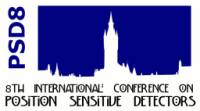Description
Applications in Space Science
Prof.
Alan Owens
03/09/2008, 12:10
Applications in Space Science
Keynote talk
As space missions have evolved, the scientific programs they carry out are becoming increasingly multi-disciplinarian and multi-waveband. This in turn, requires a broader range of measurements to be performed and therefore more instruments to be flown. Whereas, thirty years ago the average planetary mission carried, say, 4 prime instruments, it may now carry 10 or 12. However, a commensurate...
Prof.
David Smith
03/09/2008, 13:50
Applications in Space Science
Oral Contribution
The e2v technologies CCD54, or swept-charge device (SCD) has been extensively radiation tested for use in the Chandrayaan-1 X-ray Spectrometer (C1XS) instrument, to be launched as part of the Indian Space Research Organisation (ISRO) Chandrayaan-1 payload in 2008. The principle use of the SCD is in X-ray fluorescence (XRF) applications, the device providing a relatively large collecting area...
Mr
Takahito Toizumi
03/09/2008, 14:10
Applications in Space Science
Oral Contribution
We report on the performance test of a multi-anode photomultiplier (MAPMT) R8900-M16-UBA newly developed by Hamamatsu Photonics K.K. A great advantage of R8900 series is a highly sensitive surface (> 80 % of physical area), but the quantum efficiency (QE) was relatively low (~ 20 %). In this paper, we have made two substantial changes on R8900-M16 : (1) to improve the QE to 40 % level, by...
Dr
John Lees
03/09/2008, 14:30
Applications in Space Science
Oral Contribution
Planetary exploration places high demands on instrumentation and presents some of the harshest operating environments including extreme thermal conditions, high radiation tolerance and low mass and power constraints. We present data on a novel detector, the Semi-Transparent SiC Schottky Diode (STSSD), which shows promising energy resolution (at 5.9 keV it was 1.5 keV Full Width at Half...
Dr
Luca Baldini
03/09/2008, 14:50
Applications in Space Science
Oral Contribution
The Gamma-ray Large Area Space Telescope (GLAST) is a next generation high-energy gamma-ray observatory designed to explore the sky over more than four energy decades (20 MeV--300 GeV) with unprecedented sensitivity and resolution. The Large Area Telescope (LAT), the main instrument on board GLAST, is a pair conversion telescope designed and built exploiting the state of the art in high-energy...

